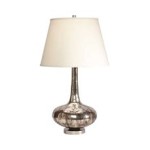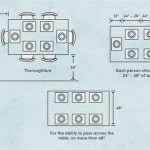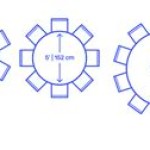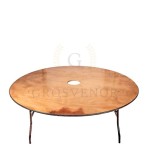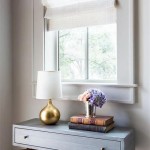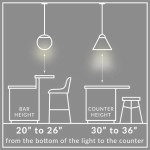How Long Should a Dining Room Table Be?
Determining the appropriate length for a dining room table is a multifaceted decision that significantly impacts the functionality and aesthetic appeal of a dining space. Several factors must be considered to ensure the chosen table fits both the room's dimensions and the anticipated usage patterns. These factors include the room size, the number of people to be seated, the desired flow of traffic around the table, and the overall style and design of the dining room.
A dining table that is too large can overwhelm a room, making it feel cramped and difficult to navigate. Conversely, a table that is too small may not adequately accommodate the intended number of diners, leading to an uncomfortable and impractical dining experience. Therefore, a careful evaluation of various considerations is essential before making a final decision on the ideal table length.
Assessing Room Dimensions and Available Space
The first and arguably most crucial step in determining the appropriate dining table length is to accurately assess the dimensions of the dining room itself. Measure the length and width of the room, taking note of any architectural features that might impede the placement of the table, such as doorways, windows, or built-in cabinetry. These features will influence the usable space available for the table and the surrounding movement.
Once the room dimensions are known, it is essential to allocate sufficient space around the table for comfortable seating and movement. A general guideline is to allow at least 36 inches of space between the edge of the table and any walls or furniture. This clearance ensures that individuals can comfortably pull out their chairs, sit down, and move around the table without feeling constricted. For areas with heavy foot traffic, such as walkways, a wider clearance of 42 to 48 inches may be more appropriate. This allows for easier passage and minimizes the risk of bumping into seated diners.
Consider the shape of the room when determining ideal table length. For long, narrow rooms, a rectangular table is often the most suitable choice as it maximizes the use of the available space. In square or more spacious rooms, a round or oval table could offer a more visually appealing and sociable dining experience. However, even with round or oval tables, the diameter or length should be carefully considered in relation to the room's dimensions to maintain a balanced and harmonious design.
Furthermore, it is beneficial to create a scaled drawing or use a space planning tool to visualize different table sizes and configurations within the room. This allows for a more accurate assessment of how the table will fit and ensures that there is sufficient space for comfortable seating and movement. Consider using painter’s tape on the floor to physically mark the proposed table dimensions and surrounding clearance. This practical approach can offer a clear visual representation of the table’s footprint and help identify any potential spatial challenges before committing to a purchase.
Determining Seating Capacity and Individual Space Requirements
The number of people that the dining table is intended to accommodate is a primary factor in determining its required length. A general rule of thumb is to allocate approximately 24 inches of linear space per person at the table. This provides each diner with sufficient elbow room and personal space, ensuring a comfortable dining experience. However, the ideal space may vary depending on the style of seating and the overall formality of the dining setting.
For casual dining settings, where a more relaxed atmosphere is desired, slightly less space may be acceptable. Conversely, for formal dining occasions or when using larger chairs with armrests, allocating 26 to 28 inches per person may be more appropriate. This ensures that everyone has ample room to move and dine comfortably without feeling cramped or restricted.
To calculate the minimum table length needed for a specific number of diners, multiply the desired seating capacity by the allocated space per person. For example, a table intended to seat six people would ideally be at least 144 inches long (6 people x 24 inches/person = 144 inches). However, it is important to consider the shape of the table when applying this calculation. A rectangular table requires a longer length compared to a round or oval table to accommodate the same number of diners.
Round tables offer a more intimate and sociable dining experience, allowing diners to easily see and interact with each other. However, they require a larger diameter to accommodate a given number of people compared to a rectangular table. A round table that seats six people typically has a diameter of at least 48 inches, while a round table that seats eight people may require a diameter of 60 inches or more. Oval tables offer a compromise between the linear seating of a rectangular table and the sociability of a round table. They can be particularly well-suited for narrower rooms where a rectangular table might feel too imposing, yet a round table would not provide sufficient seating capacity.
Consider the possibility of needing to accommodate additional guests on occasion. Opting for a table with leaves or extensions can provide flexibility in seating capacity, allowing the table to be expanded when needed and reduced in size for everyday use. Extension tables are a practical solution for homeowners who frequently entertain or who anticipate needing to accommodate larger gatherings at some point in the future.
Considering Table Style, Materials, and Design
The style, materials, and design of the dining table significantly influence its overall appearance and impact on the dining room's aesthetic. When choosing a table, consider the existing décor of the room and select a style that complements the overall design scheme. A modern dining room might benefit from a sleek, minimalist table with clean lines, while a more traditional dining room might be better suited to a table with ornate details and a richer finish.
The materials used in the construction of the dining table also play a crucial role in its aesthetic appeal and durability. Solid wood tables offer a timeless and classic look, and they are known for their strength and longevity. However, they can be more expensive than tables made from other materials. Veneer tables offer a more affordable alternative to solid wood, providing a similar appearance at a lower cost. Glass-topped tables can create a light and airy feel in a dining room, and they are often paired with modern or contemporary designs. Metal tables are another option, offering a durable and industrial-chic aesthetic.
The design of the table base or legs can also significantly impact its overall appearance and stability. A pedestal base can provide ample legroom and a clean, uncluttered look. Trestle tables offer a more rustic and informal style, while four-legged tables provide a classic and stable design. Consider the style and finish of the table legs in relation to the rest of the room's décor. For example, chrome or stainless steel legs might complement a modern dining room, while wooden legs might be more appropriate for a traditional setting.
Consider the shape of the table's edge. A straight edge is common and versatile, while a beveled or rounded edge can add a touch of elegance and prevent sharp corners. The height of the table is also important to consider, ensuring that it is comfortable for diners of various heights. The standard dining table height is typically between 28 and 30 inches, but it is always best to test the table's height with your chosen chairs to ensure a comfortable seating arrangement.
Ultimately, the ideal length of a dining room table is a balance between functionality, aesthetics, and spatial considerations. By carefully assessing the room's dimensions, determining the desired seating capacity, and considering the table's style and materials, it is possible to select a table that perfectly complements the dining room and provides a comfortable and enjoyable dining experience for all.

Expert Advice How To Design A Perfectly Scaled Dining Room The Kuotes Blog

Standard Dining Table Dimensions The Size Guide
Dining Room Guide How To Maximize Your Layout

How To Work Out The Best Size For Your Dining Table Modish Living

Table Size Advisor Which Is Right For Me

Standard Dining Table Sizes The Size Guide Before You Buy Wi World Interiors

Dining Room Measurement Guide The Oak Furniture Land Blog

Designing A Dining Room Fit For Gathering Amy Kartheiser Design

Table Size Seating Capacity Round Rectangular More

How Far Above A Table Should Light Hang Design And Lighting Experts Advise Homes Gardens

